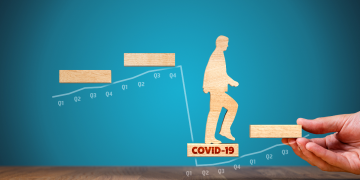I have a friend who has completely disrupted mental models around customer experience (which must never be confused with customer service). Lou Carbone is the author of “Clued In,” and the founder of Experience Engineering. Lou is unique because he asks questions like these:
What are the non-conscious drivers of customer behavior? Is it possible to design an experience that causes a person to feel what they want to feel when they buy from you? Would a customer be happy or upset if they knew you had engineered their experience?
Let’s explore these ideas together.
What’s in your closet?
I realized long ago there were subconscious forces driving my purchasing behavior. Like me, have you ever bought a piece of clothing only to find you had six identical items in your closet? At one point, I realized another leather jacket was never going to make me cool … but at least I felt cool! And what was the deal with Imelda Marcos, the wife of brutal dictator Ferdinand Marcos? When she was ushered out of power 1,200 pairs of shoes were found in her closet!
It turns out we don’t buy or wear our favorite brand because we love them. We do it because of how we feel about ourselves when we buy or wear or use these products. Lowe’s may want us to feel good about them, but what we really want is to feel good about ourselves when we complete a project ourselves.
Do you know what your customers want to feel about themselves when they buy from you?
Perhaps your customer buys from you because unconsciously they want to feel like a handyman hero or a savvy investor. Perhaps your customer wants to feel pampered or important or like an insider. There is a reason credit cards come in gold, platinum and black. The point is, to shamelessly steal from JFK, “Ask not what you want your customer to feel about you but ask instead what your customer wants to feel about themselves.”
So, can you engineer an environment to stimulate these feelings? Let’s consider Mayo Clinic. When you go to Mayo, what do you want to feel? When I went there I wanted to feel I’d made a smart choice. I wanted to feel I was getting the best care possible and I wanted to feel like I was important and not just patient #793482. And guess what happened? Well before I arrived, I received a document that explained all the tests I would receive at what time. I was given information about where I might want to park and stay overnight. I was informed all my records had already been received from my local doctors and I would be debriefed at the end of my day. When I arrived, I found truly helpful people at help desks, clear signage and bright, clean surroundings filled with music and art.
Afterward, I found myself telling people how Mayo really had their act together and that it was a great experience. What I didn’t tell people (out of my desire to maintain the illusion of being a manly man) was that I felt safe, cared for, and smart for choosing Mayo.
Disney has taken these ideas to an art form. Do you know why garbage cans are placed every 132 feet at Disney World? Because that’s the distance a person travels while eating a $12 hot dog! You can’t name a park the happiest place on earth without imbedding these clues into the environment. By the way, you’re probably thinking, “I don’t remember that many garbage cans at Disney World.” And of course you wouldn’t because they are immaculate and they don’t look like garbage cans.
Does knowing that a company has gone to these lengths to engineer an experience cause you to be upset? Speaking for myself, it’s just the opposite. I love the fact that someone cared enough to think of everything. It makes me feel special, and I know how I can get that feeling any time I want. When we rethink the customer experience in this way, we soon join an elite group of companies with rabidly loyal customers … on the inside track.







